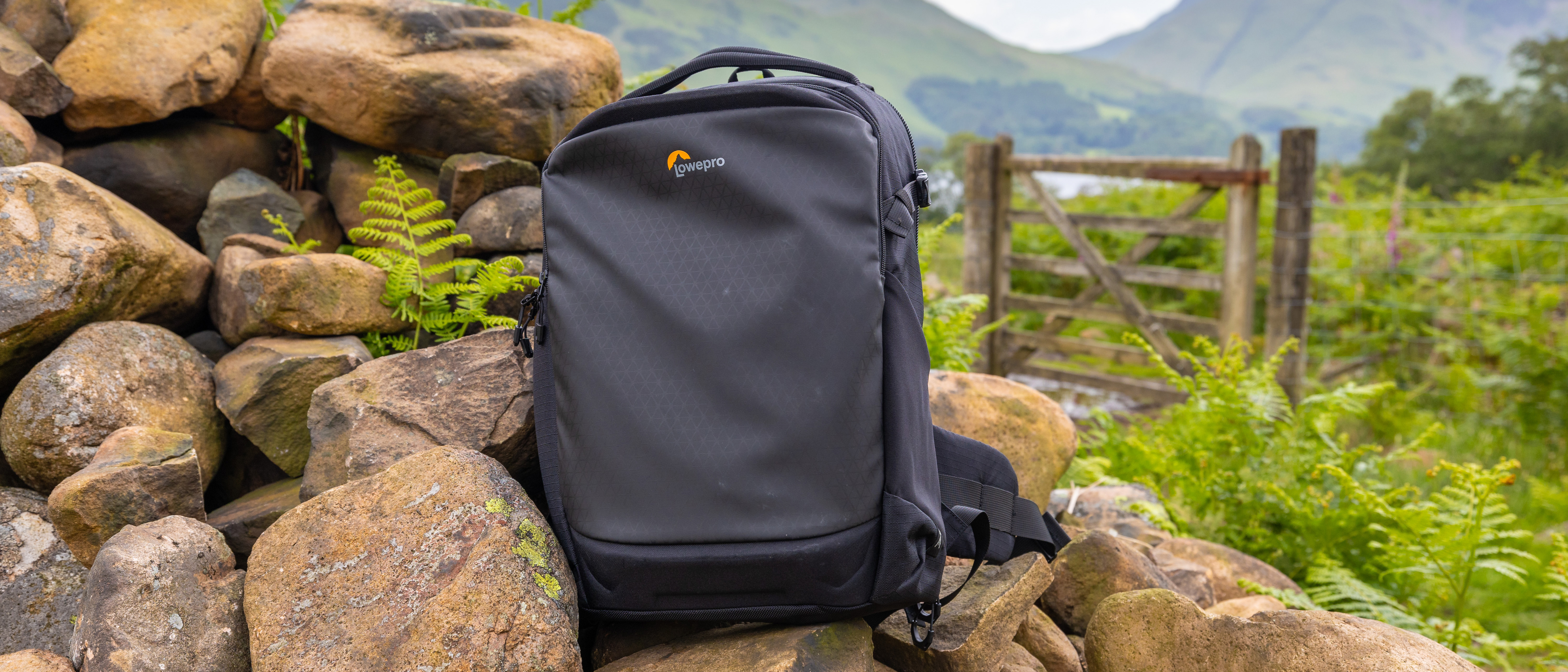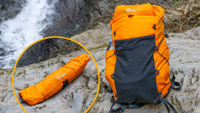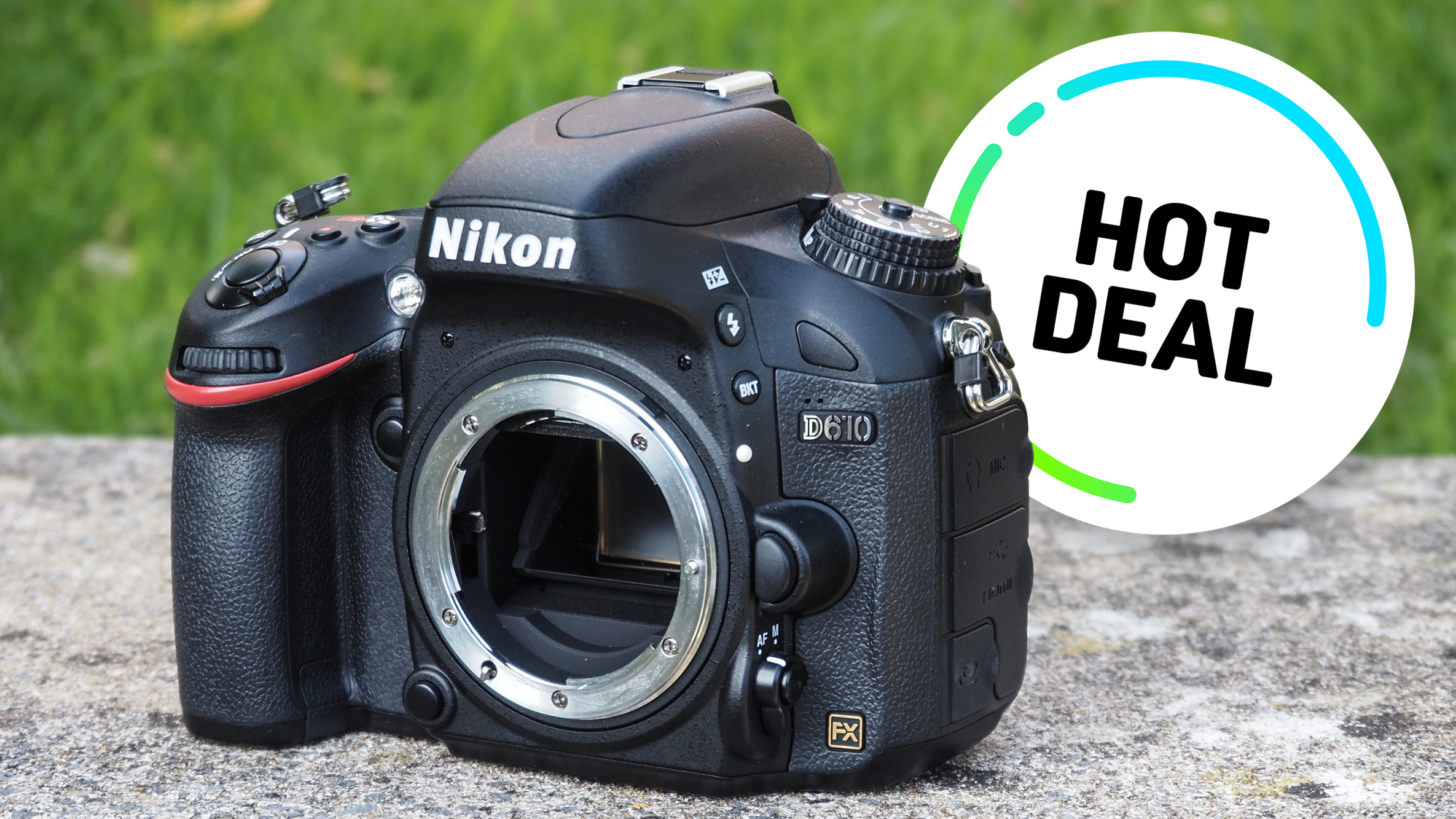Digital Camera World Verdict
Lowepro's third iteration of its popular Flipside backpack is by no means a bad photography bag. It has however, lost the spark that made it so special in its previous two outings, and is now rather run-of-the-mill. It gets the job done and is made from premium build materials, it also has some of the most storage space for accessories and electronics we've ever seen in a camera backpack and it's comfortable to wear on long journeys too. But, if you're upgrading from the Mark I or II versions you might find yourself longing for some of the features that have been left on the cutting room floor this time around, which is a shame as it had the potential to be a great backpack, rather than just a good one.
Pros
- +
Roomy interior
- +
Loads of space for accessories
- +
Premium build materials
- +
Storage space for 15" laptop and 10" tablet
- +
Comfortable
Cons
- -
Tips onto its back when placed down
- -
Has lost its ‘flipside’ function
- -
No dedicated water bottle pocket
- -
No central tripod lashing point
- -
Rain cover now takes up space inside your bag
Why you can trust Digital Camera World
The Flipside Backpack 400 AW III is Lowepro's third crack at the Flipside range and has big shoes to fill after the award-winning Flipside Backpack 400 AW Mark I and II.
The new iteration is the 400 AW III which we tested here, though there's the smaller 300 AW III option too. Which you go for will depend on both your capacity and budget requirements. Whichever model you choose however, both make several noteworthy departures from its predecessor, that we’ll get into over the course of this review and discuss whether you should part with your cash for one.
Lowepro has a longstanding record as a reputable and reliable manufacturer of some of the best camera backpacks, so we were eager to see if the new Flipside Backpack 400 AW III could live up to expectations and build on the high acclaim that came before it.
In terms of rivals in the same budget range you're looking at Manfrotto's PRO Light Multiloader Camera Backpack M or PRO Light Flexloader Backpack L, Vanguard's Alta Rise 48 Backpack 27, the Tenba Axis c2 LT 20L and MindShift Gear BackLight 18L Photo Daypack to give you a few options to compare on price and features. It's also such a departure from Lowepro's Flipside 400 AW II that it's in direct competition with itself as this is still available to buy and we'll get into why that might actually be a better option for many photographers in this review...
Specifications
External dimensions (WxDxH): 33 x 24 x 48 cm
Internal dimensions (WxHxD): 28 x 14 x 41 cm
Size options in range: Small, Medium
Backpack type: Backpack
Camera access: Rear and side
Laptop compartment: Up to 15"
Tripod fastener: Yes
Chest / Waist straps: Yes
Rain-proof cover: Yes, separate
Weight: 1.7kg
Build & Handling
The Flipside Backpack comes in a 400 AW III or smaller 300 AW III variations which have capacities of 20L and 17L respectively, the smaller 300 AW iteration can also only take a 13” laptop while the bigger 400 AW can fit a laptop of upto 15”.
The difference in price is $150/£169 for the 400 AW or $140/£119 for the smaller 300 AW III. Whichever size you go for you have the option of black or dark grey colorways which are both quite nondescript and help keep a low profile, though you no longer have the Mica/Pixel Camo option from the Mark II version which I always thought looked rather good. There's also now no longer a larger 500AW version.
As the black and gray colors don’t stand out they'd be great for keeping a low profile in urban environments as they don't scream photographer, or even for wedding photography where you don't want to wear anything too distracting.
Lowepro says its 3rd iteration of the Flipside Backpack has been "redesigned for the outdoors", featuring robust fabrics and a front PU coating offer "extreme durability and protection from the elements, moisture and abrasion"
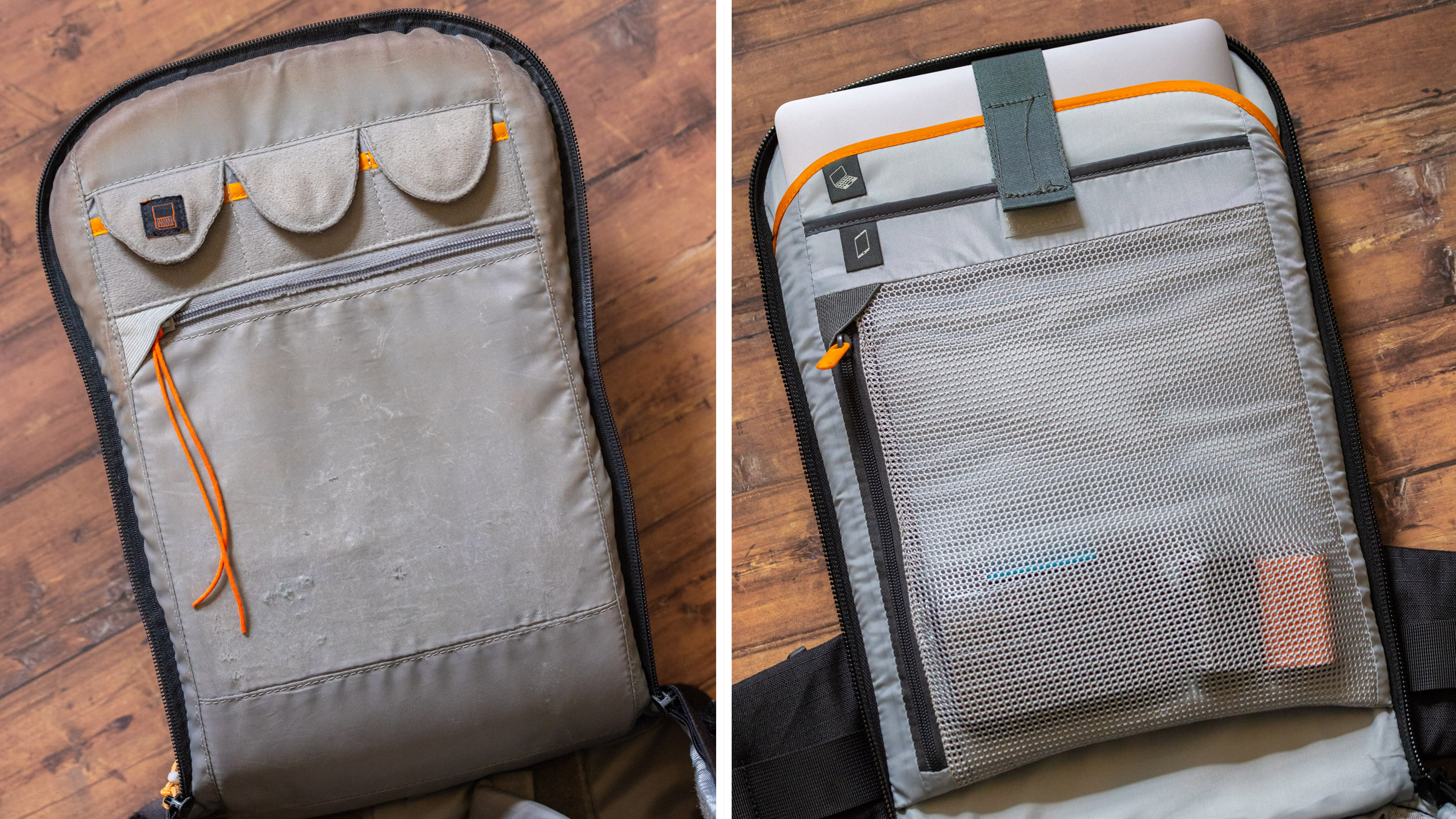
The 400 AW III boasts a CradleFit™ pocket which suspends and protects a 15” laptop, there's also space for a 10" tablet.
One downside we found with the Flipside Backpack 400 AW III is that it's balanced in such a way that when placed on its base it has a tendency to fall onto its back rather than the front. This may not sound like a big deal, but it means the bag more often than not falls flat onto the rear padded part that comes into contact with your back, and if this falls and gets muddy, it will end up on your back.
The front of the backpack is ironically where the EVA molded bumpers are located and these have specifically been designed to keep the bag raised up and out of the dirt. But we found that unless you remember to place the bag on its front when you take it off then it will roll onto its back.
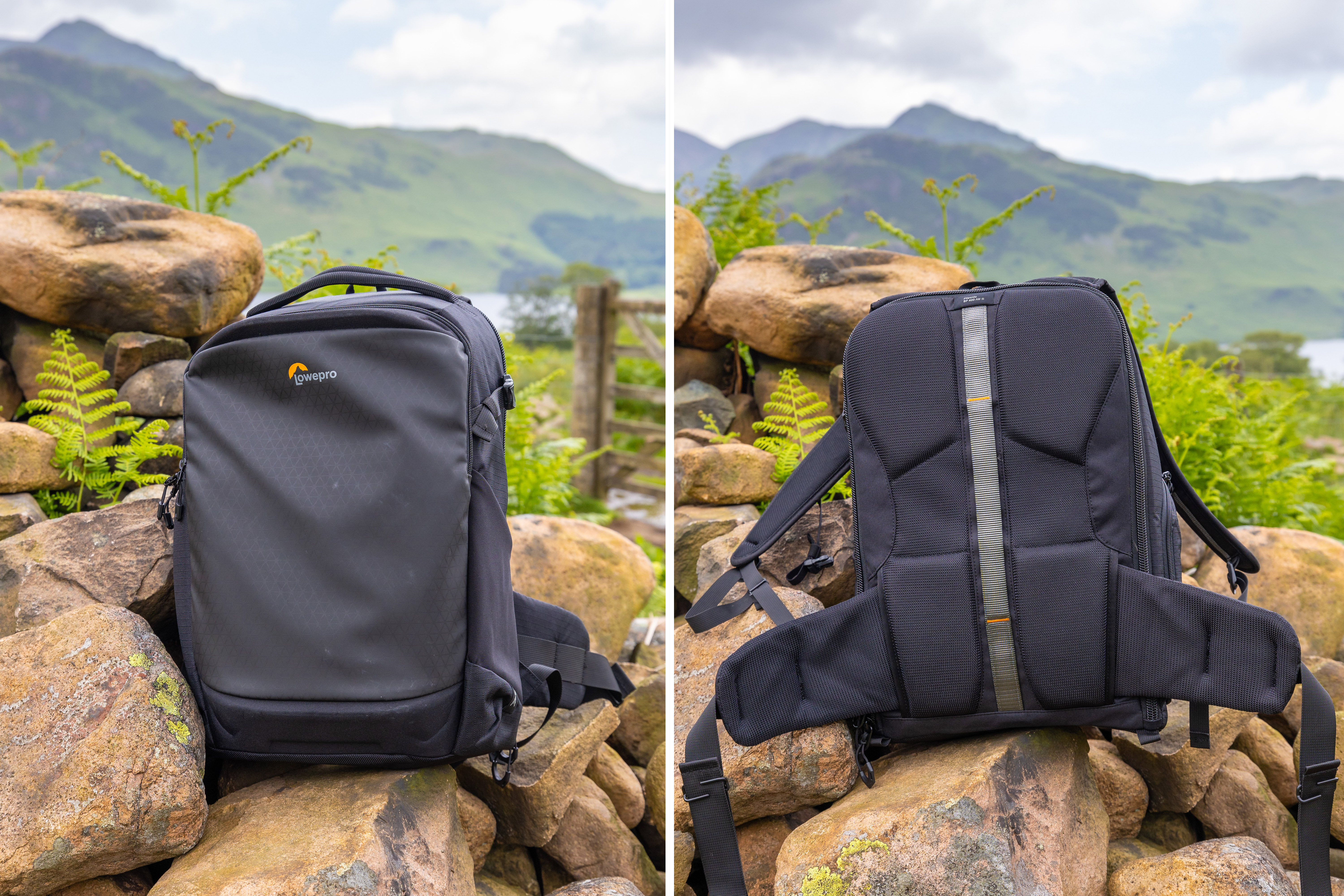
While there's no dedicated water bottle holder there is a soft pocket for a tripod foot to fit into underneath the tripod strap. At a push this could be used to hold a very small drink bottle and would require the tripod attachment to not be in use also. However as seen on the Mark I and II versions we'd have preferred to have a dedicated water bottle holder on the other side. The central tripod mounting point from the prior two versions has also been missed off the spec sheet this time around.
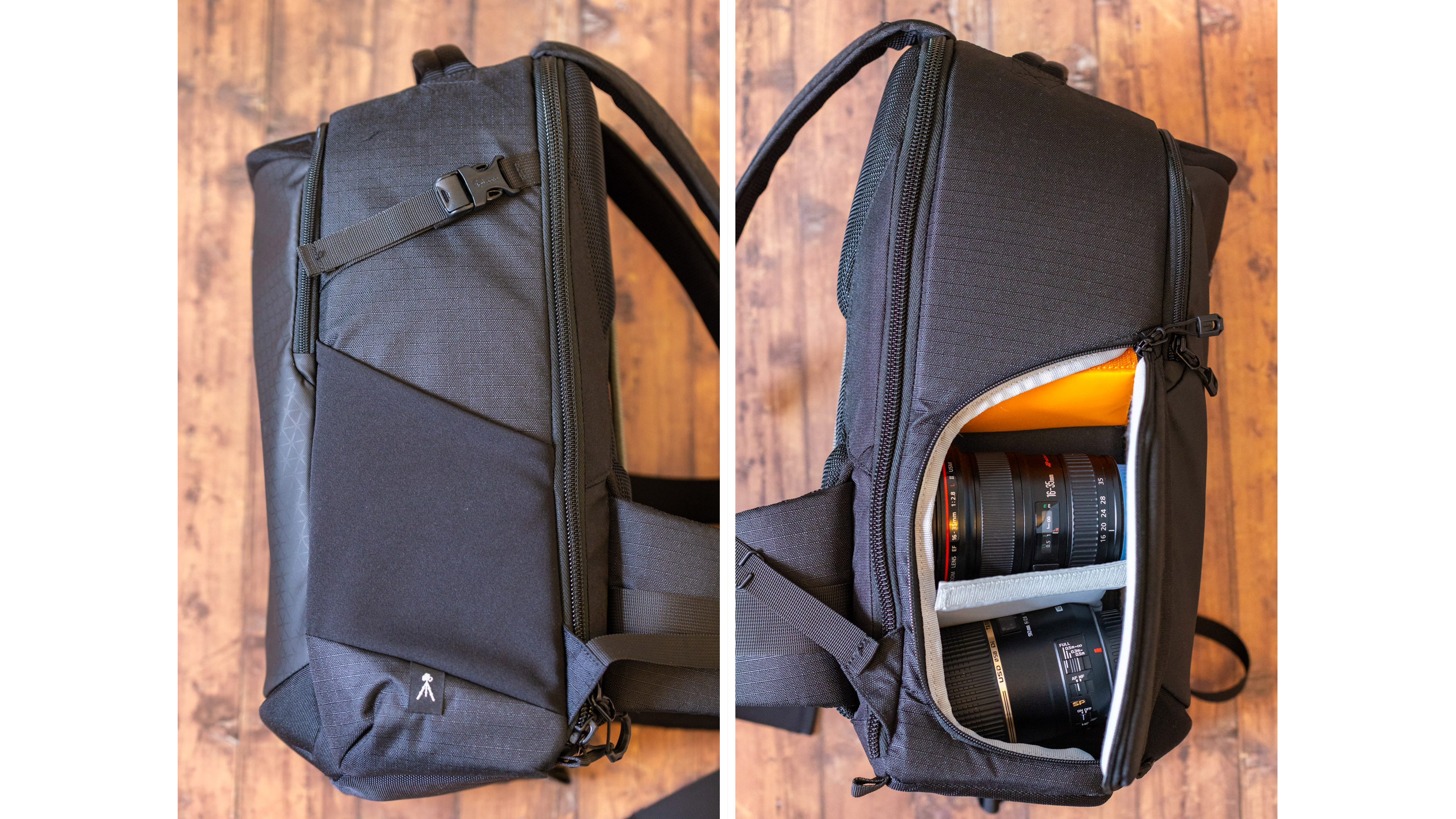
The Flipside III has a side access panel as well as the full back opening which allows you to get to your main camera and attached lens much more quickly and easily. However, I tended not to use this and would have preferred a water bottle holder on that side in its place.
The 400 AW III gets its 'Flipside' name because it's been designed for photographers to be able to use the waist straps to flip the backpack around to your front and access your bag without needing to fully take it off.
Apart from aforementioned omission of a water bottle pocket, the 400 AW III has plenty of space and pockets for your accessories. The bag is extremely spacious with big pockets and compartments for laptops, tablets, chargers and peripherals. While it does a good job at providing space for larger items, there is a bit of a lack of pockets and spaces to locate your smaller items such as memory cards, so this means you have to pack in a memory card case or organizer.
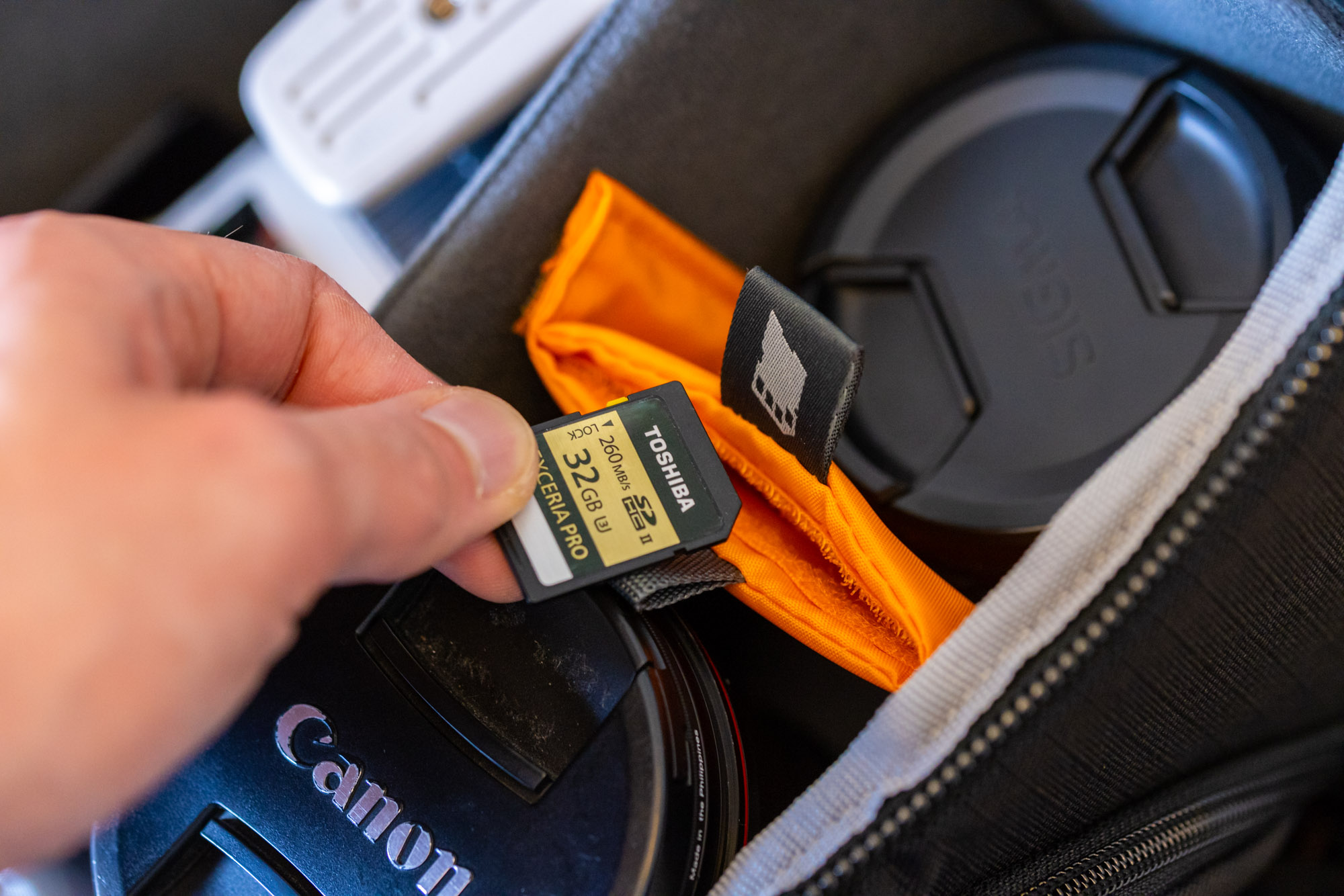
A couple of the internal dividers do have a velcro pocket designed to hold memory cards, but that's not something I'd feel comfortable using, putting all of the pressure and weight of cameras and lenses on to the cards just seems like you're asking for trouble.
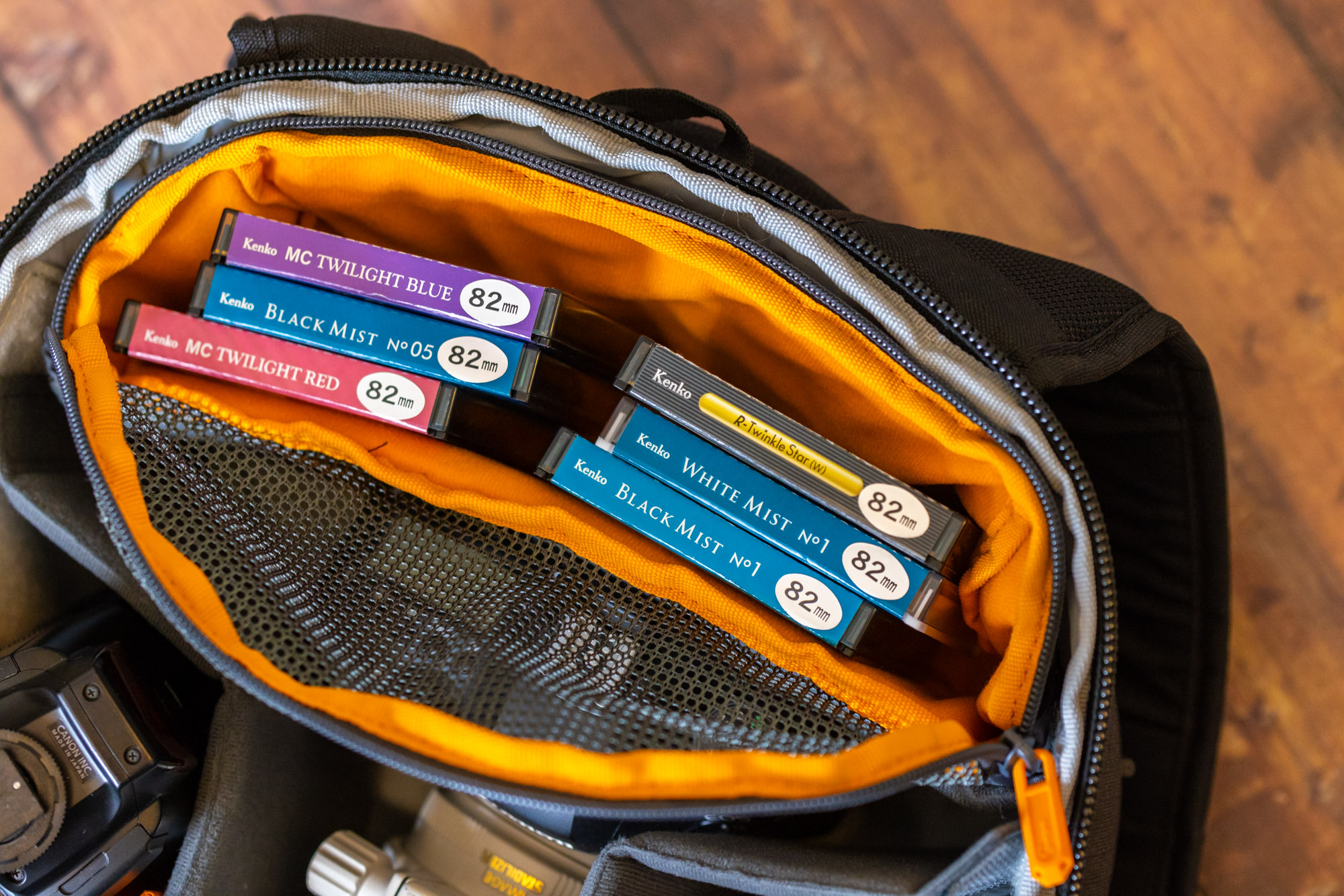
It also features an internal 'GearBox' which is a soft removable pouch with a zippered front mesh, ideal for stowing filters, cables, batteries or a memory card holder and so on. It has interior dimensions of 27x11x9cm and by default is found at the top of the interior compartment, though can be repositioned using the velcro or removed entirely to free up more space for larger lenses.
Performance
The Flipside BP 400 AW III gets some welcome upgraded materials in the form of 600D polyester and 600D polyester ripstop as well as molded EVA bumpers on the front and ‘enhanced’ 10mm YKK® zippers which are considerably larger than the zippers found on the prior models and makes it a little easier and smoother to open in a hurry.
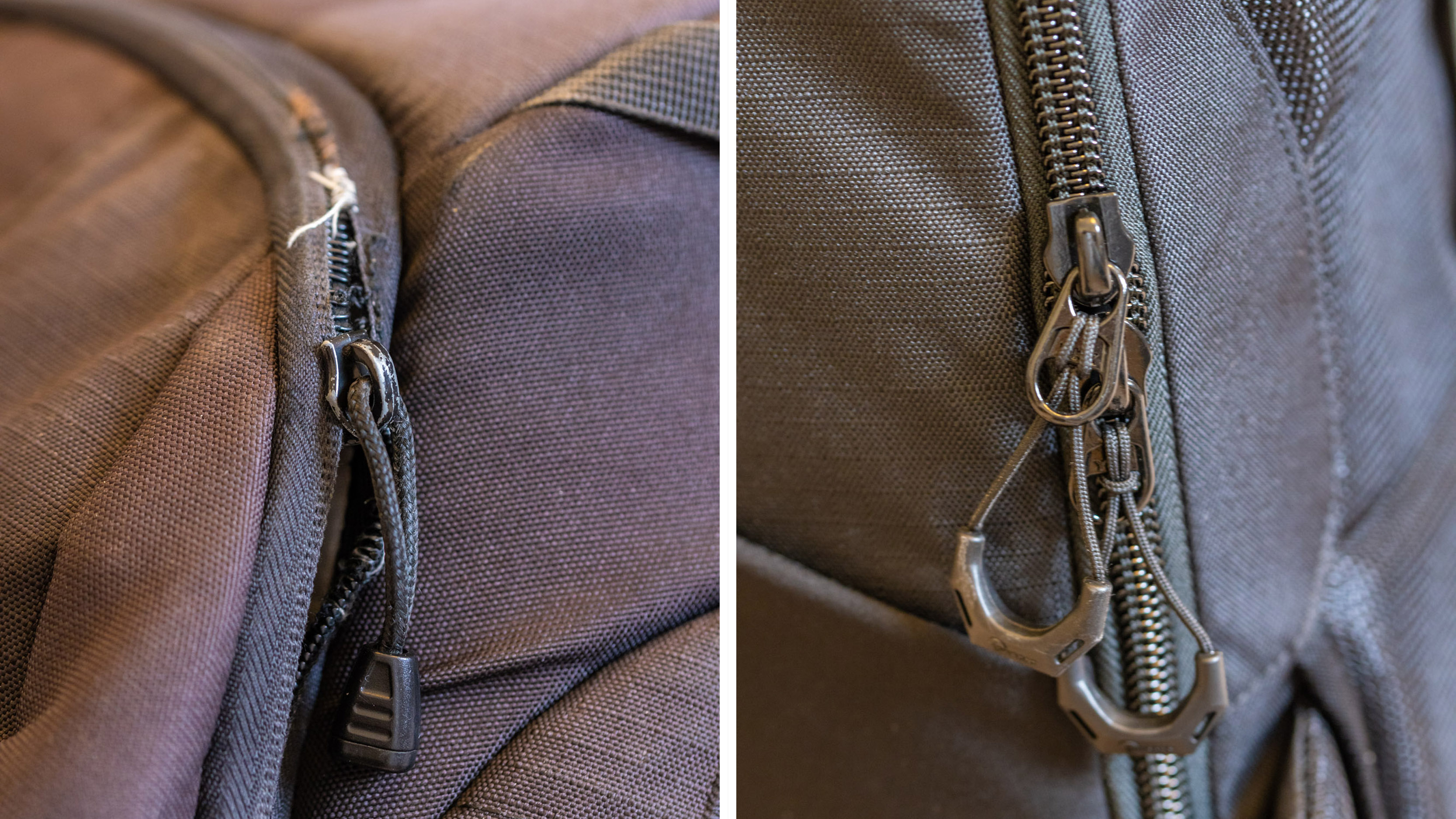
The interior material is 150D 148T polyester, though the internal dividers have been made much thinner this time around so they're harder and less malleable to fit oddly shaped bits of kit. They can be removed via the velcro attachment but essentially you need to keep them in their default position as it's pretty much the only layout that works due to their rigidity. This configuration also means that the side pocket is then used predominantly to access and swap lenses, rather than grabbing your camera with a lens attached, which is how side access panels usually work.
One advantage of the new model is its molded EVA bumpers which raise the front of the bag out of the dirt a little when taken off and planted face-down on the ground. This is likely to happen often too, as the new design makes it difficult to flip the bag around on its waist straps as it doesn’t sit completely flat like on the prior model, so gear is more likely to topple out in this setup and lens swaps are impossible as you need one hand holding the bag at all times to stop it falling down.
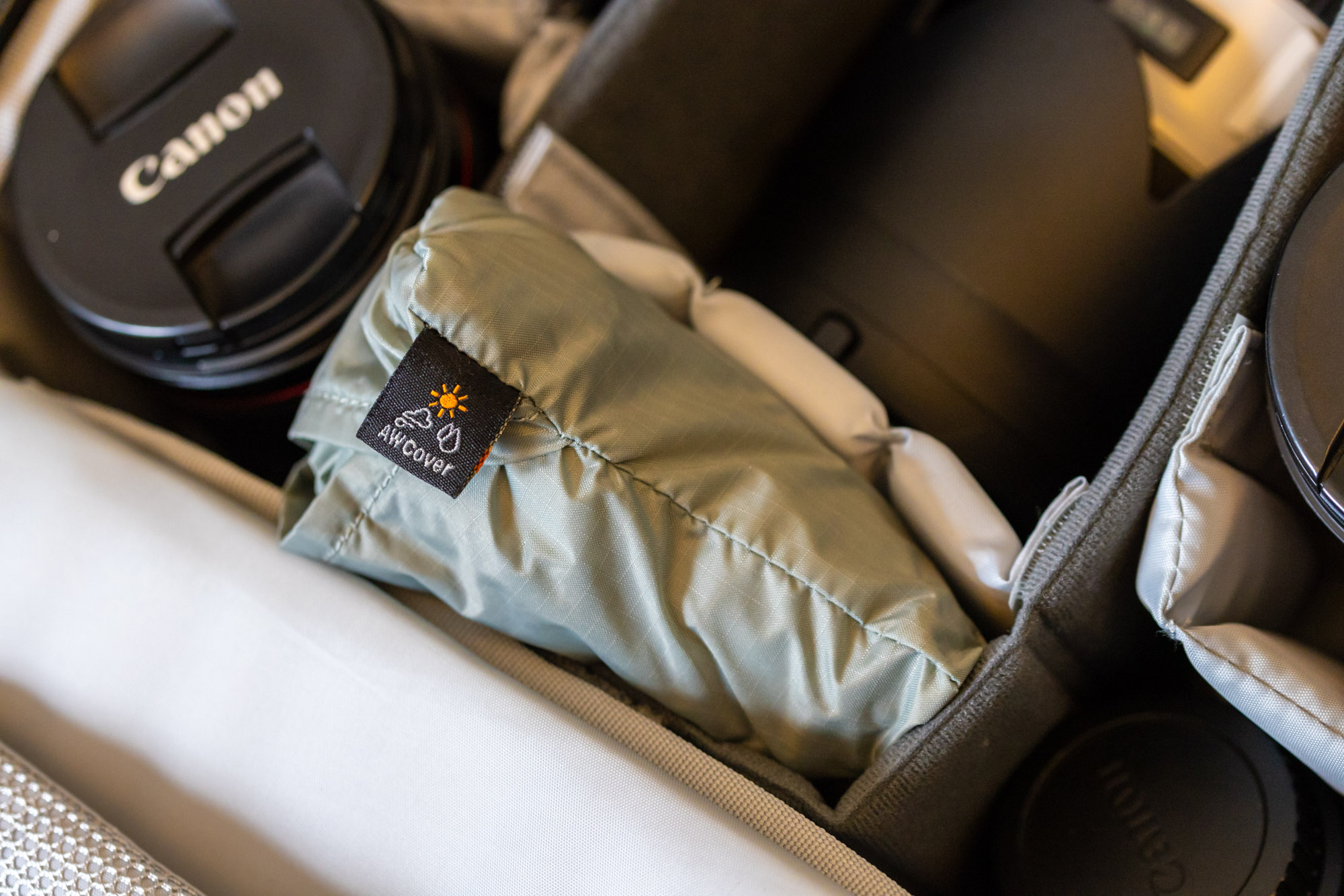
The Flipside Backpack 400 AW III comes with an All Weather AW Cover™ to protect your gear from rain, snow, dust and sand. While this is a welcome addition, it comes in its own carry pouch that you'll need to find space for somewhere inside of your back. This is an unwelcome change from the previous versions which had the rain cover built into the base and tucked away in the base and keeping your dirty or wet rain cover away from your camera kit. This was a better solution because it didn't take up space in your internal compartments and also kept the wet, dirty material far away from your expensive cameras and lenses.
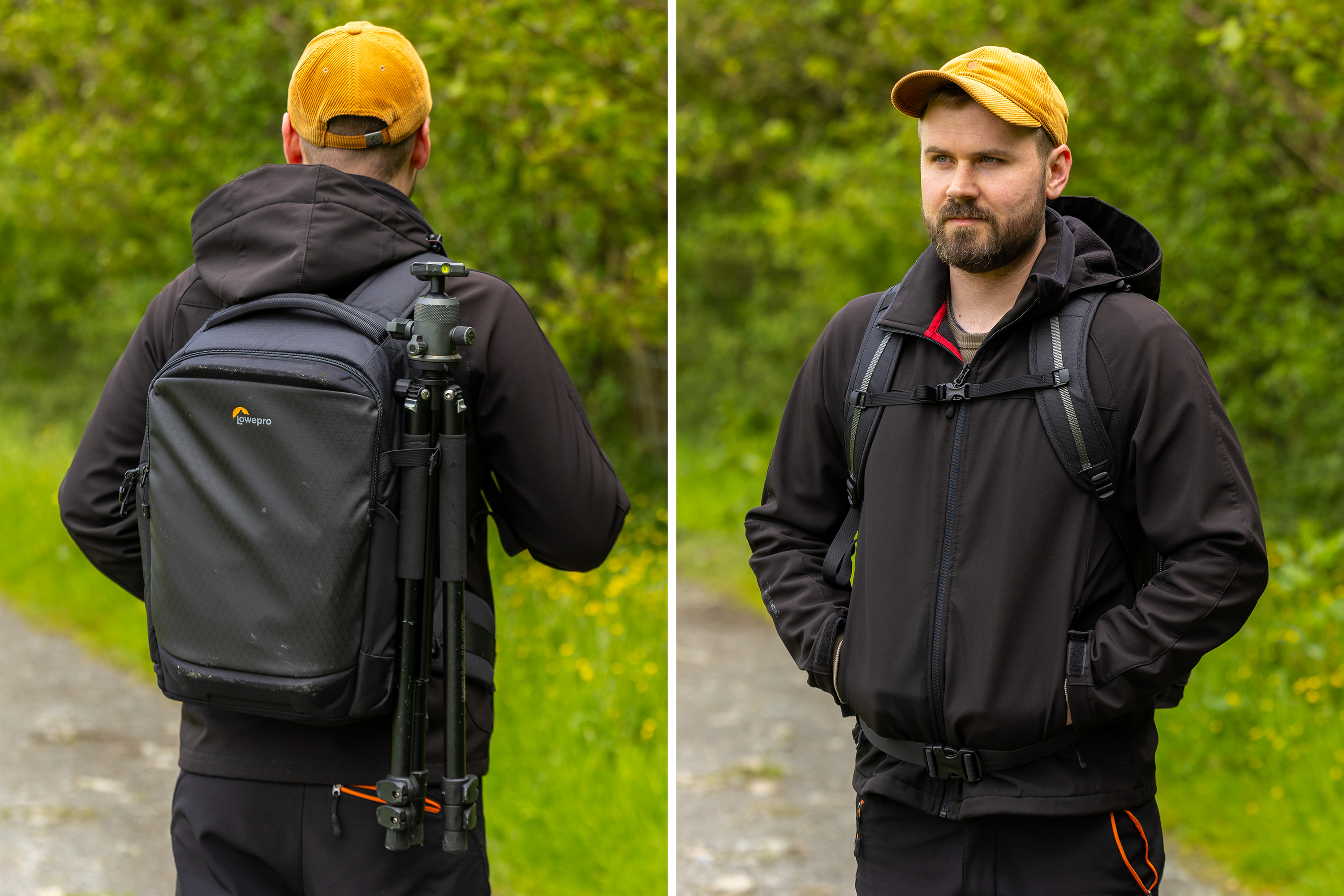
The BP 400 AW III comes with both a sternum strap to stabilise the bag from swaying side-to-side on long walks and can be adjusted to fit different heights. It also boasts padded waist straps which help transfer the weight of the bag and its contents onto your hips rather than your shoulders so it's comfortable to wear, though for very long walks a hiking backpack would be more comfortable with their longer design and metal frame.
There’s a new grab handle on the back of the Mark III which is a welcome addition and makes it great for picking up and carting around more easily. The central tripod lashing point found on the back of previous models has been left out this time meaning your tripod can only be strapped to the side which can make the bag a bit unbalanced, it also prevents the side pocket from being used to stash a water bottle at the same time.
Verdict
Lowepro’s original Flipside 400 AW Mark I was my camera bag of choice for many years, so I was excited to if Lowepro had made one of my favourite camera bags even better. Testing the latest iteration was ultimately a disappointment as so many of the features that made the Mark I and Mark II versions great (and also award-winning) have sadly been left on the cutting room floor this time around. Perhaps this is an inevitable outcome of manufacturer’s feeling the need to release new products on a regular basis. I hope Lowepro realises this misstep and is able to rectify and add back in some of those great features in its next update.
It would be unfair to say that all of the changes made are negative, I’ve never seen a backpack with so much storage for electrical peripherals with dedicated pockets for both a 15” laptop, or 10” tablet, as well as heaps of storage in the front pocket for spare batteries and an internal GearBox to house your most needed accessories on the inside. If you often struggle to find space for large filters, need to carry power banks or shutter release cables you will struggle to find a bag that can beat it for space.
It’s not a bad backpack by any means and the Flipside Mark III is also reasonably priced, but it was disappointing to see Lowepro unceremoniously cut out many of the features that photographers loved in the previous models. It's a Flipside bag in name only, as it shares very little of the same DNA as its previous models.
| Features | The backpack does have some useful features but has lost many of the key specs that made its predecessors so great | ★★★ |
| Design | The premium build materials and comfort is good but the internal dividers are thin and there isn't much dedicated space for smaller accessories like SD cards | ★★★ |
| Performance | The Flipside 400 AW III is comfortable to wear on long hikes but the rain cover now takes up space in the main compartment and the single tripod lashing point prevents a water bottle from being stowed | ★★★ |
| Value | It's relatively well priced for photography backpack but we'd have loved to have seen it packed with more features that would have enhanced its value | ★★★ |
Should you buy the Lowepro Flipside BP 400 AW III?
✅ Buy this if...
- You're looking for a reliable camera backpack made from top materials that can fit a DSLR or mirrorless body with a 200mm f/2.8 lens attached, plus 4-5 additional lenses
- You're looking for a comfortable photography rucksack with lots of room and space for electronics, large laptops and tablets.
🚫 Don't buy this if...
- You're upgrading from the Lowepro Flipside Mark I or II versions as you'll be disappointed with how many features have been left out
- You need extra options for tripod lashing points and also need a dedicated water bottle holder instead of a side access door.
Alternatives

Deputy Editor on PhotoPlus: The Canon Magazine, Dan also brings his technical wizardry and editing skills to Digital Camera World. He has been writing about all aspects of photography for over 10 years, having previously served as technical writer and technical editor for Practical Photography magazine, as well as Photoshop editor on Digital Photo.
Dan is an Adobe-certified Photoshop guru, making him officially a beast at post-processing – so he’s the perfect person to share tips and tricks both in-camera and in post. Able to shoot all genres, Dan provides news, techniques and tutorials on everything from portraits and landscapes to macro and wildlife, helping photographers get the most out of their cameras, lenses, filters, lighting, tripods, and, of course, editing software.
